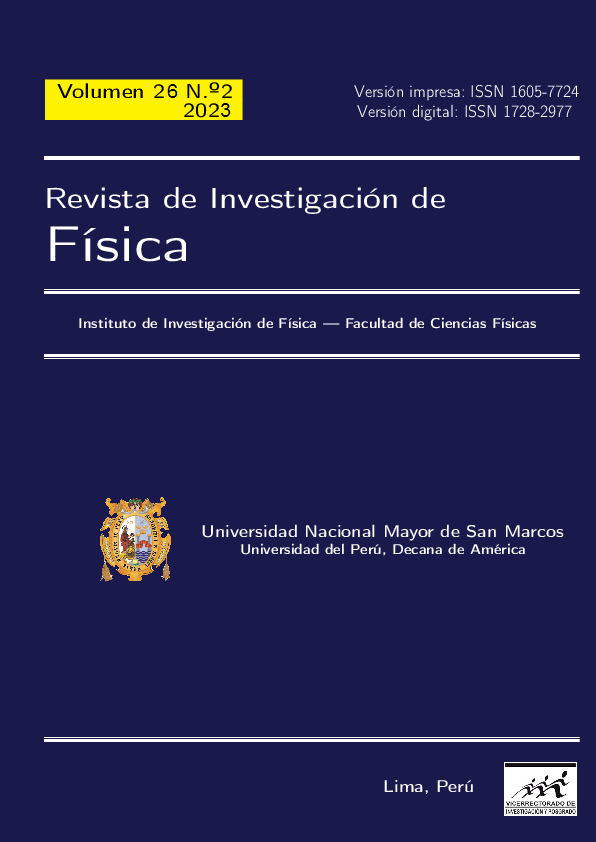Velocity at the maximum height of tsunami inundation in the Lagrangian frame
DOI:
https://doi.org/10.15381/rif.v26i2.24939Keywords:
tsunami, runup, lagrangian approach, nonlinear, flux velocityAbstract
The tsunami flux velocity is usually mistaken for the propagation velocity. The former corresponds to water particles and the latter to surface waves. The misunderstanding may be due to the approach, the Eulerian frame highlights the tsunami wave behaviour. On the other hand, the lagrangian frame makes easier to identify the flux velocity by highlighting the tsunami particle behaviour. This study considers the analytical solution, derived from the lagrangian frame, of the water level as a function of time, for identified water particles during the tsunami inundation process, to calculate the flux velocity. The solution function takes into account that water particles are displaced by one large wave propagation and it is simplified to one dimension. From this solution the horizontal and vertical analytical velocities can be calculated, which are the flux velocity components. The lagrangian analytical solutions are calculated for: a single wave whose parameters are taken from the Callao Tsunami of 1746; a set of identified particles along a horizontal axis that is representative of Costa Verde, at the coast close to the San Miguel police station, Lima. Peru. Via the lagrangian solution plots, for the location and velocity as a function of time, the maximum horizontal flux velocity is found to be 8 m/s, and the water particle dynamics is described.
Downloads
Published
Issue
Section
License
Copyright (c) 2023 Juan Avalos

This work is licensed under a Creative Commons Attribution 4.0 International License.
THE AUTHORS RETAIN THEIR RIGHTS:
a. The authors retain their trademark and patent rights, as well as any process or procedure described in the article.
b. The authors retain the right to share, copy, distribute, perform and publicly communicate the article published in the Revista de Investigación de Física (for example, place it in an institutional repository or publish it in a book), with an acknowledgment of its initial publication in the Revista de Investigación de Física.
c. The authors retain the right to make a subsequent publication of their work, to use the article or any part of it (for example: a compilation of their works, notes for conferences, thesis, or for a book), provided that they indicate the source. of publication (authors of the work, journal, volume, number and date).






